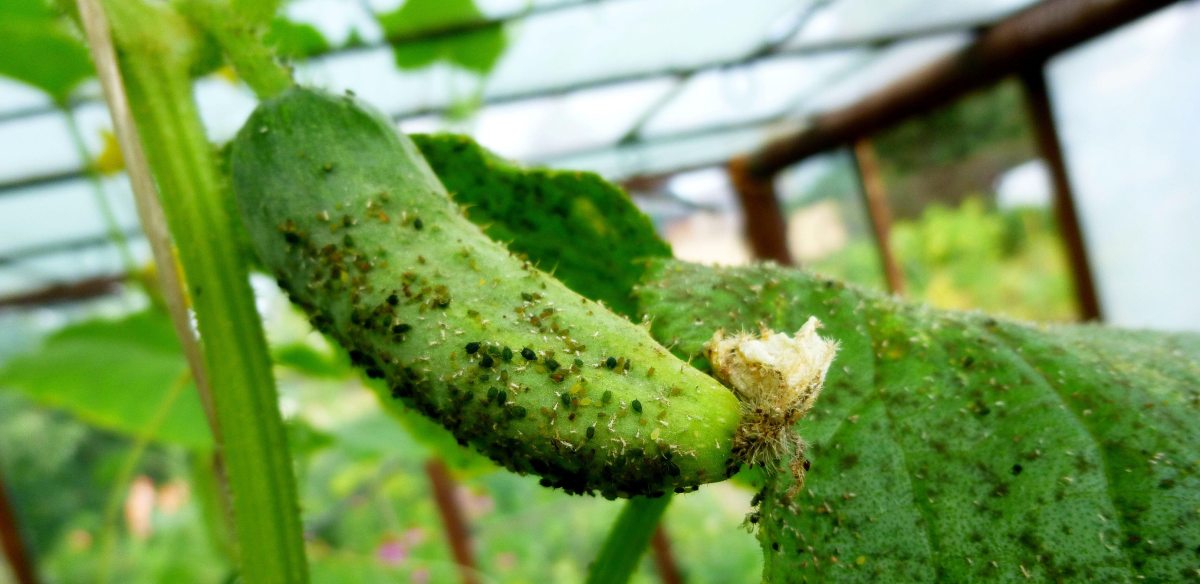If you’re a newcomer to greenhouse gardening, you may not be aware of the many pests which can invade both edibles and ornamentals under glass.
Common pests include vine weevil, grubs, whitefly, thrips, aphids, fungus gnats, slugs, mealybugs and spider mites, warns BBC Gardeners’ World presenter Mark Lane.

“All these pests can be dealt with in several ways, just like you would in the garden, with the exception that you are working in an enclosed environment,” says Lane, gardening expert for stairlift and home lift company Stannah (stannah.co.uk).
“Opening doors, windows and vents will help with air circulation and aid against diseases and pathogens to some extent, but when it comes to the critters in your greenhouse you need to take immediate action.”
How to stop pests ruining your greenhouse
Here, Lane, offers the following tips to help keep your greenhouse pest-free.
1. Keep it clean

Keeping your greenhouse clean, by thoroughly emptying it and washing down every surface (including tools, pots and trays) with warm water and a little detergent or an insecticidal soap, at least once a year, will refresh your greenhouse and allow you to start the year in the knowledge that you are beginning with a pest-free environment. Throughout the year, ensure you also remove all plants and any plant debris and always maintain a weed-free greenhouse.
2. Check plants regularly

So many gardeners forget to check over plants before they add them to a greenhouse. By checking them over you can see if there are any slugs hiding in the soil or under the pot, and whether there are mealybugs or any other pest. Our plants love the warmer temperatures, but so do pests. Once you have plants in your greenhouse you will need to check regularly for any signs of infestations.
3. Use shop-bought compost
Use shop-bought composts for your potted plants as this will have been sterilised which means no pests. Soil used straight from the garden will contain several pests as well as beneficial insects, as well as possible diseases.
4. Set traps
View this post on Instagram
Hang fly papers or sticky insect yellow sheets from the cross beams in your greenhouse, as well as wasp traps. Sticky white traps help detect fungus gnat. Vents and windows essential for altering the humidity and air flow will also allow pests in. Fly netting on doors will still provide good ventilation but stop any unwanted guests.
For thrips and whitefly there is a simple trick of wrapping sticky tape around your hand, with the sticky side facing outside, and then gently rubbing your hand over the infected plants. Just like the sticky fly paper, the thrips and whitefly will be agitated and stick to the sticky tape. You can then dispose of this properly.
Slugs and caterpillars are best picked off by hand and removed or destroyed by whatever fashion you like. I like to add mine to the bird feeders as tasty treats.
5. Cool off
View this post on Instagram
If your greenhouse is hot and dry, then spider mites can be a problem. You can wet the floor with water, which will evaporate into the air throughout the day cooling the temperature and adding moisture to the air. Try to eliminate pools of standing water on floors, however, as algae and moss can grow which are sources for fungus gnat and shore fly. Another simple trick is to take potted plants outdoors during the warmer days of summer, as this will help reduce the number of spider mites.
Pests also hate the cold, so during the winter leave the doors and windows open for a couple of days (if no frost or freezing weather is forecast), as this will help kill off pests, eggs and larvae.
6. Try biological controls
View this post on Instagram
Over the last few years, we have seen several biological pest controls come to the market. This is a natural way of removing the pests. A specific pest control for each pest will feed on it, and once all the food has been used up will die.
Biological control normally takes longer than pesticides, as the natural enemies need time to disperse and search for their prey. Ideally, you need to release an enemy as soon as the pest is detected. Beneficial organisms include parasitic wasps, leaf miner parasites, predatory mites, lady beetles and green lacewings. I would urge all gardeners not to use pesticides, especially when growing in an environment like a greenhouse.
7. Tackle problems early
With any pest, early detection is key. You can then diagnose the problem and act accordingly. Trapping products like the sticky tapes and paper are brilliant for managing infestations, but to clear and reduce large numbers of pests you may need to revert to mass trapping products. Monitor your trapping products, keep plant material away from them and replace when required.
8. Plant companions

I love the practice of companion planting, which is when plants are paired to repel pests and attract beneficial insects. Marigolds, tagetes, nasturtiums, mints and pelargoniums work brilliantly in a greenhouse, especially where aphids and whitefly are a problem.
If you love growing tomatoes in your greenhouse, marigolds are best planted alongside them. These companion plants attract lady beetles and lacewings which will feed on the aphids and whitefly, while mint repels ants, flea beetle, rodents and aphids.
Best-selling insect repellent
Stuck for inspiration? Check out our list of best-selling Amazon products!
No products found.
You may be interested in…
This article may include affiliate links to products and services where we may receive a small fee to support the running of this site if you make a purchase or is a sponsored article from one of our select editorial partners providing valuable advice and information to our readers.































































